A Truckvault Offers the Ultimate in Function, Convenience and Security
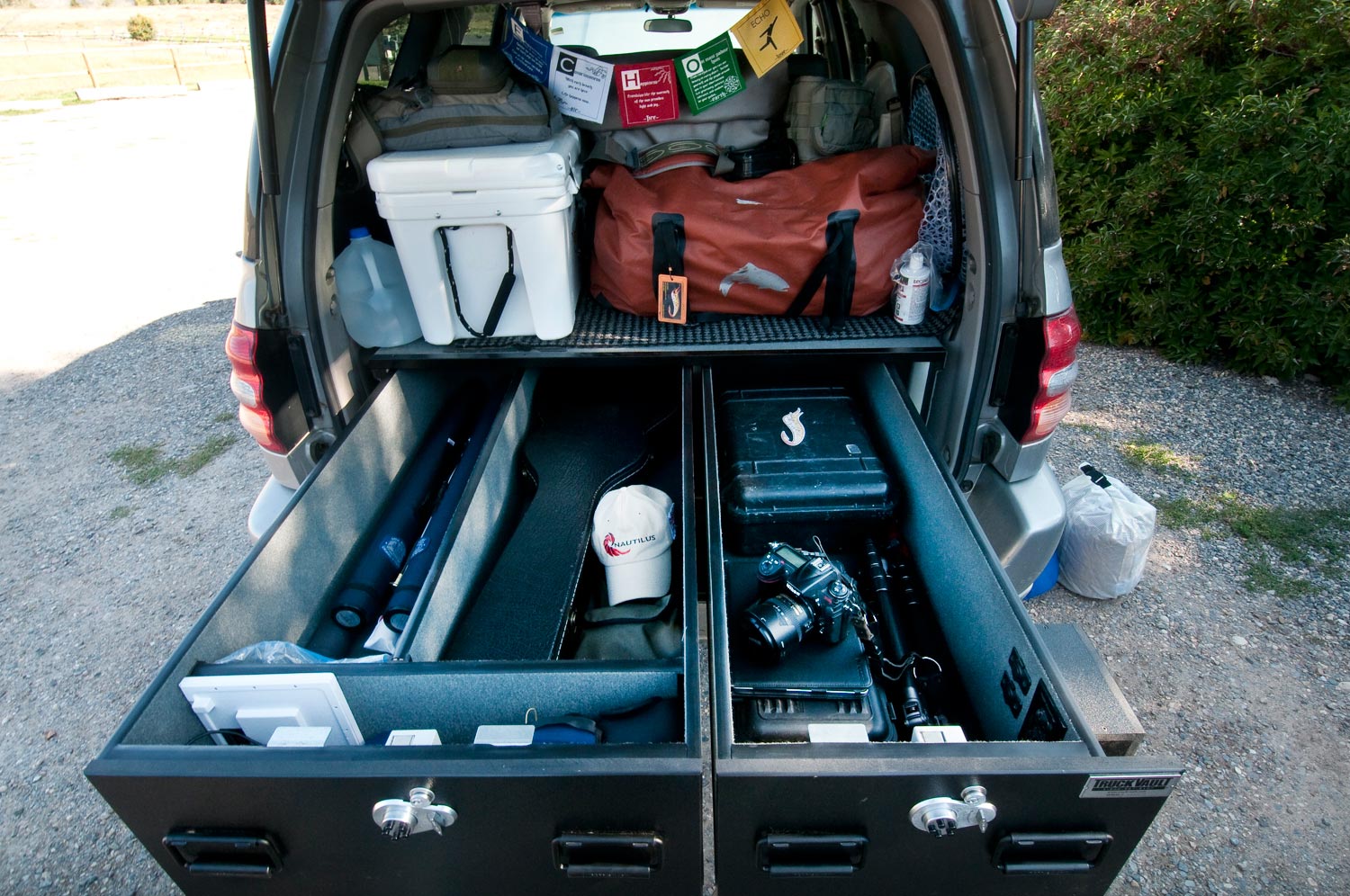
THIS MAY BE THE SINGLE GREATEST PIECE OF GEAR A FLY ANGLER CAN OWN.
As I have said on many occasions, it’s called Gink and GASOLINE for a reason. I live in my truck. Last week alone I drove over 5000 miles with my Adipose skiff in tow. This year I have driven from Atlanta, GA to Idaho, twice! I camp, I fish, I float and most of all I drive.
I’m not complaining. It’s a hell of a lot of fun, but take a minute and think about the logistics of it. A single road trip may last two or three weeks away from home. It’s going to involve photography, video, writing, online publishing, camping, cooking, boating and fishing of every imaginable type. It requires a mountain of gear.
Much of this gear is really expensive. Cameras, microphones, lights, computer, iPad, not to mention better than a dozen fly rods and reels and, of course, I have to have a guitar. All of that expensive, and fragile, gear rolling around in the back of my truck for weeks on end. Baking in the sun. Sitting in plain view at put ins and sketchy roadside pull offs. My life savings in an unlocked truck waiting for a shuttle driver. It has been a nightmare for years.
Well, not any longer. I recently upgraded from a ’98 Subaru Forester to a 2002 Toyota Sequoia. When I did, I knew it was time to get a Truckvault. I have wanted one since I saw my buddy Michael White’s Truckvault, which I wrote about last year. I had spent plenty of time drooling over the Truckvault site and knew that they made custom units for SUVs as well as pickups. I knew the time had come.
I logged on and started the process of designing my own Truckvault. The site makes it easy and some of the options are mind blowing. Anything is possible. Mine is a two drawer unit ten inches deep and fifty inches long. It spans the width of the vehicle and is covered in carpet which matches the truck. When you look in the window, you don’t even know it’s there. It has combination locks with key backups. The drawers pull out to full extension and are lined with foam and have customizable dividers. The unit is rated to hold three-thousand pounds on top and is fire safe.
Read More »Thoughts on the Killing of George Floyd
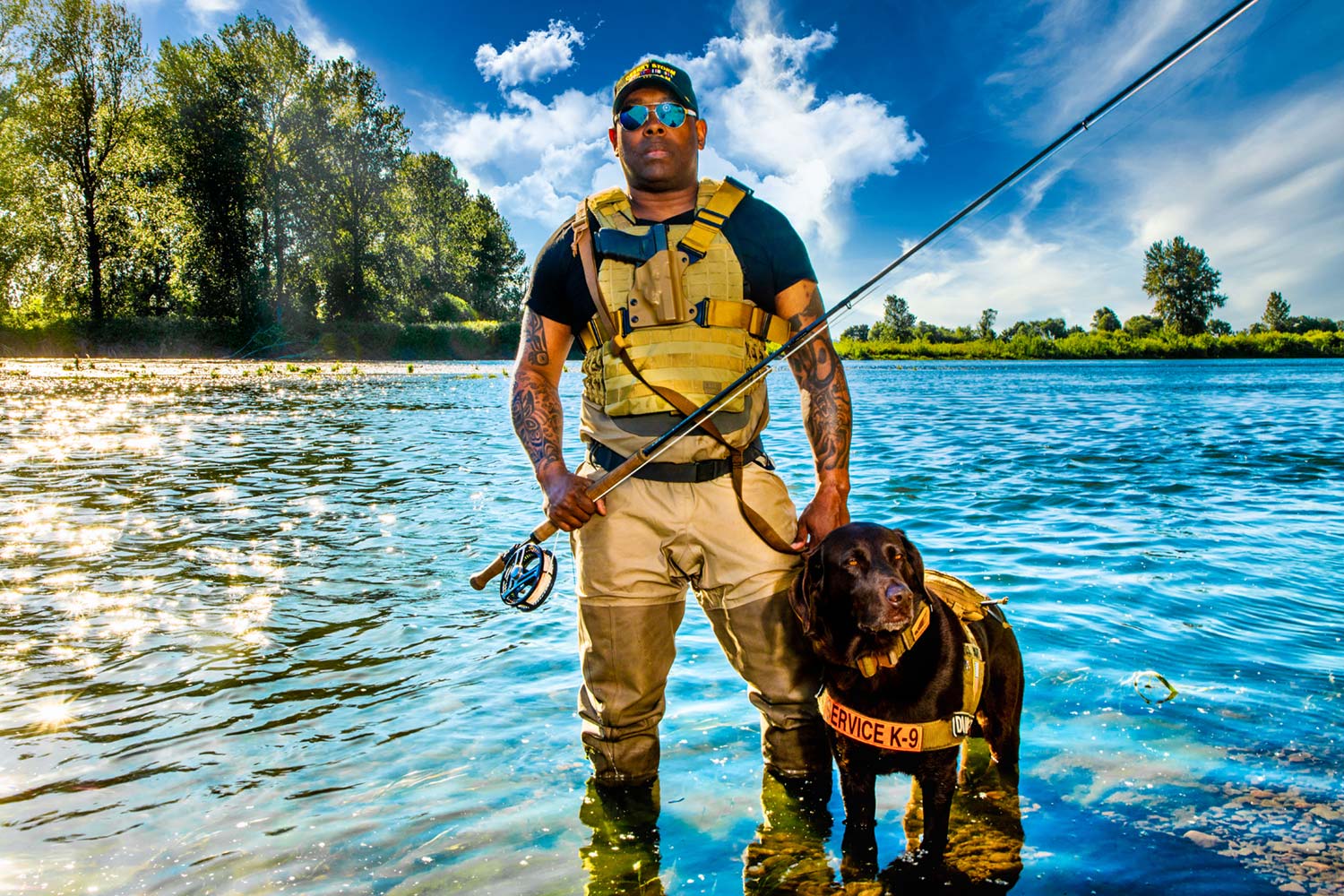
By Chad Brown
Editors Note: I am sharing this piece because I think it’s important, it’s brave, and it’s something you need to hear. I am sharing it today, in observance of Juneteenth, to honor those Americans who were victims of slavery, and their ancestors who live with it’s legacy.
Let me make two thing clear.
This is not political, it is moral. Share your morality but keep you politics to yourself.
I know from personal experience there will be negative feed back to this posting. There are racist among us. I do not have the power to change that, nor do you. All we can do is stand up and have hope for the future. I am counting on those who have hope to stand up. Please share a message of support in the comments so that our voices are heard above the hate.
Thank you, Louis Cahill
WAIT BEFORE YOU JUDGE. TAKE A DEEP BREATH. BECAUSE YOU CAN.
In the wake of the murder of George Floyd, I’ve seen countless people on social media expressing their rage — not about George’s death or about the underlying problem of inequality in our country — but about looting and physical damage to property.
I don’t support property destruction, but when there is a riot, there is no rule book.
As Dr. Martin Luther King said, “A riot is nothing but the voice of the unheard.”
The death of George Floyd is a horrific loss that has shined a spotlight on the systemic racism present not just in our nation’s police departments, but in our day-to-day lives, in our schools, offices, court systems, and elsewhere. It has highlighted the tension between white and non-white people in the United States. It has offered us a moment to pause and listen to the unheard voices of America — the voices of indigenous women missing and murdered on their own land, indigenous tribes fighting for their water rights (and losing), Hispanics facing the challenges of maintaining their identity and making a living through low-paid jobs, African Americans asking for equality and justice while seeing black boys and girls getting killed by merciless cops.
The reality of being black in America is being born with a target on you. You can’t separate from this target. It follows you wherever you go. Every time you step outside, your target is visible. You’re judged, spat on, called “nigger” time after time. You walk into a store or office and are falsely accused of a crime. You’re subject to traffic stops simply for being in the “wrong” neighborhood, and then you get harassed by the cops.
Once, when I was pulled over, the cop asked me if I was a U.S. citizen even though my driver’s license clearly indicates that I’m a United States veteran. My car tires have been slashed while fly fishing. Once, while I was fishing on Veteran’s Day, my brake lines were ripped out of my truck.
On social media, I have been publicly accused of “taking” fly fishing from white people. I’ve been told “This is our sport not yours!” and “You need to ask permission to fish my river!” I have received threatening phone calls where I was told I will be drowned the next time I try to fly fish.
We all love the outdoors and, as Americans, nature is free for us to enjoy. But nature is not free for me the same way
Read More »Fly Fishing: The Importance of Having a Good Game Plan
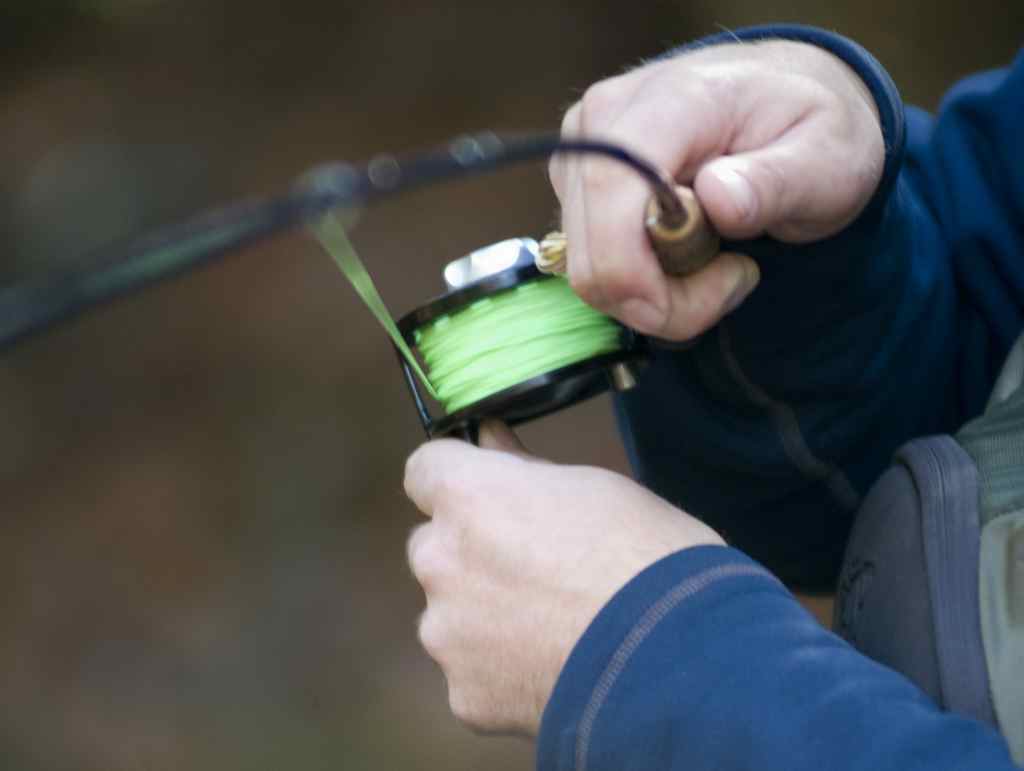
It’s cool to shoot from the hip on the water. What I mean by that, is fly fishing a new stretch of water and catching fish right out the gates. Sometimes you get lucky and hit the bullseye right off the bat, catching fish immediately after wetting your fly line. Unfortunately, that’s not going to happen ever time you pull the trigger on the water, especially on water you’ve never laid your eyes on or haven’t fly fished in months. Veteran fly fisherman that have logged hundreds, if not thousands of hours on the water fly fishing, understand this fact, and that’s why most of them have develop a familiar fly fishing game plan that they use to help them locate and decipher the feeding pattern for the given day. They’ll run through a list of different fly patterns, rig or types of water, and eventually they’ll gain enough information through observation and feedback from their fishing, that they’ll be able to dial into the most effective way to stay into the fish. This strategy is very similar to how tournament bass fisherman pre-fish water to identify and develop a pattern on the lake before tournament time. When conditions change or specific tactics yield little success, having a “game plan” of what you’re going to do next is invaluable on the water when it comes to not only getting your skunk off, but also fully enjoying your time on the water. Below is an example of a “trout game plan” that I use when I’ve not been on the water for a while or when I’m visiting new water. It usually increases my success a great deal.
1. GATHER INTELLIGENCE ABOUT YOUR FISHING DESTINATION BEFORE YOU LEAVE THE HOUSE.
It may seem like a no brainer, but many of us don’t start gathering intelligence about the water we’ll be fly fishing until we’ve parked our vehicle and hit the water. With present day technology, it’s very easy for fly anglers to begin developing a fishing game plan well in advance of their fishing trip, by simply surfing the web for present fishing reports, water and weather conditions or taking the time to contact a couple local fishing buddies prior to the fishing departure date. Many trips have been saved by Louis and I just by getting on the phone or using the internet to gain knowledge of the fishing location. Google Earth is a great application on your computer or smartphone that you can use to scope out your target fishing area. It’s come in really handy for us finding boat ramps, and gauging whether or not certain floats or runs (driving a boat from point a to b) were going to feasible. It also can be helpful to quickly identify shallow or deep water areas when you’re fly fishing in saltwater or on large reservoirs. Remember, just about any intelligence you can gather, no matter how large or small, will almost always increase your odds for success when you reach the water you’ll be fly fishing.
Read More »Top Ten terrestrial patterns

By Johnny Spillane
THERE’S NOTHING BETTER THAN FISHING TERRESTRIALS!
I know Kent was just gushing over his love for terrestrial fishing a few weeks back so we thought we would do a second installment of top ten flies. This week we are going to pick our top 10 favorite western terrestrial patterns. Ants, beetles, hoppers, cicadas, crickets you name it, if it crawls on the land and falls in the water, fish eat them. It didn’t seem fair to compare a hopper to an ant to a cicada so these are our favorites in no particular order. Let us know what you think and send us your favorites!
Carl’s Cicada
Cicada’s are one of the best “hatches” to fish when you hit it at the right. During the first few days of seeing them, you will find the biggest fish in the river up on the surface crushing them. Carl’s Cicada was developed on the Green River below flaming Gorge and has been putting fish in guides boats down there for a long time. It can also double as a big beetle pattern.
TIMMY’S HOPPINDICATOR
It’s a hopper, no wait, it’s an indicator. Hoppindicators are great for a few reasons. As the name implies, you can fish it alone as a hopper or you can drop a reasonable heavy nymph without sinking it. It’s got big old googly eyes and holds up even after catching a bunch of fish.
POWER ANT
Its an ant with a little pizzazz.
6 Easy Tips to Help Fly Anglers Catch Educated Trout
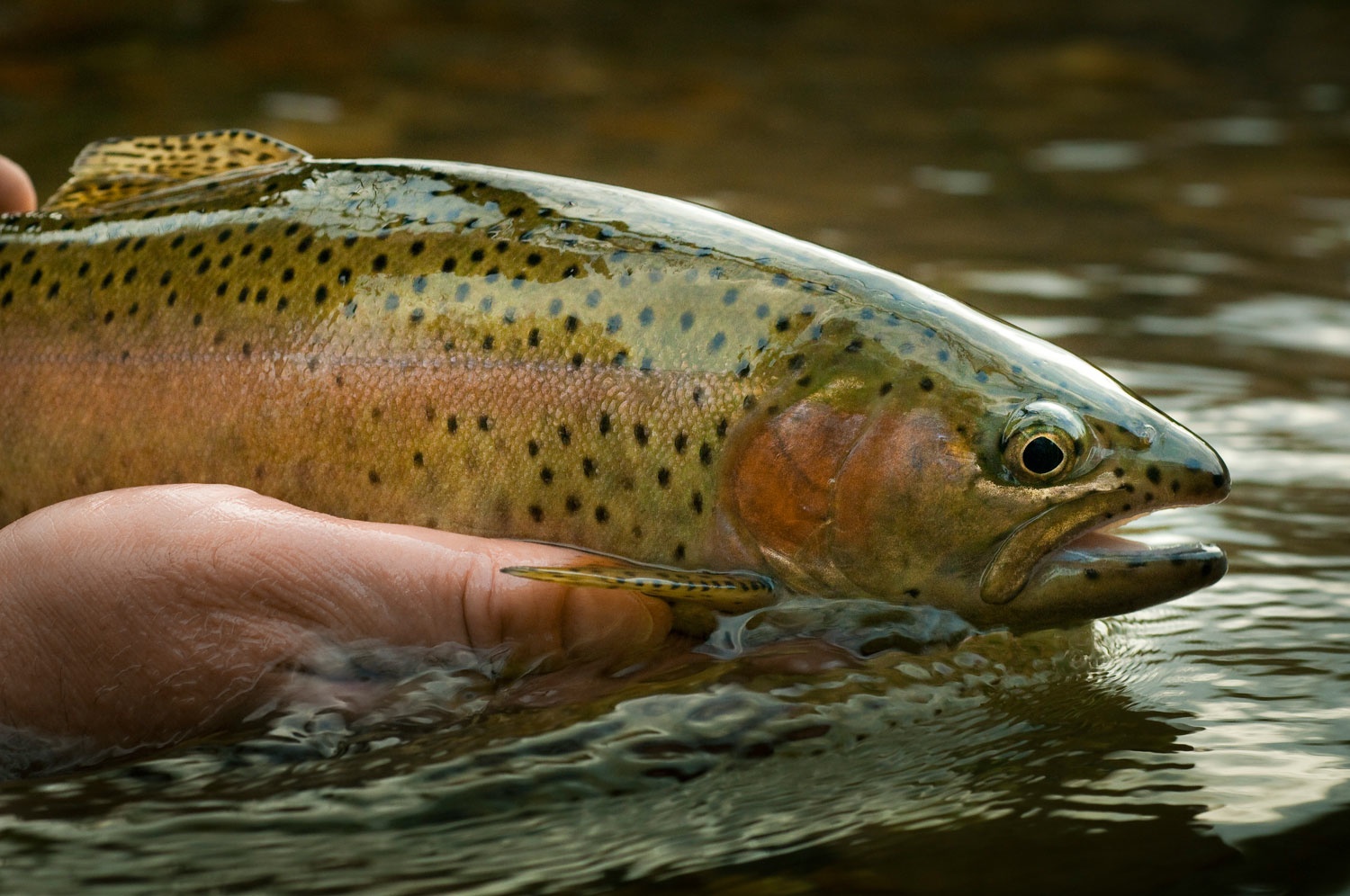
Back in 2012, I wrote an article titled “The Best Way to Improve Your Trout Game” which talked about how beneficial it was for fly fishermen to not shy away from fishing technical trout water. And that the increased challenges of such water was one of the best ways for anglers to take their fly fishing skills to the next level. Today’s article is sort of going to be a complimentary piece that falls into the same category. Specifically, I’m going to provide 6 easy tips that fly anglers of all skill levels can use to help them be more effective at catching educated trout.
Read More »Buying US-Made Fly fishing Gear Helps US Fisheries
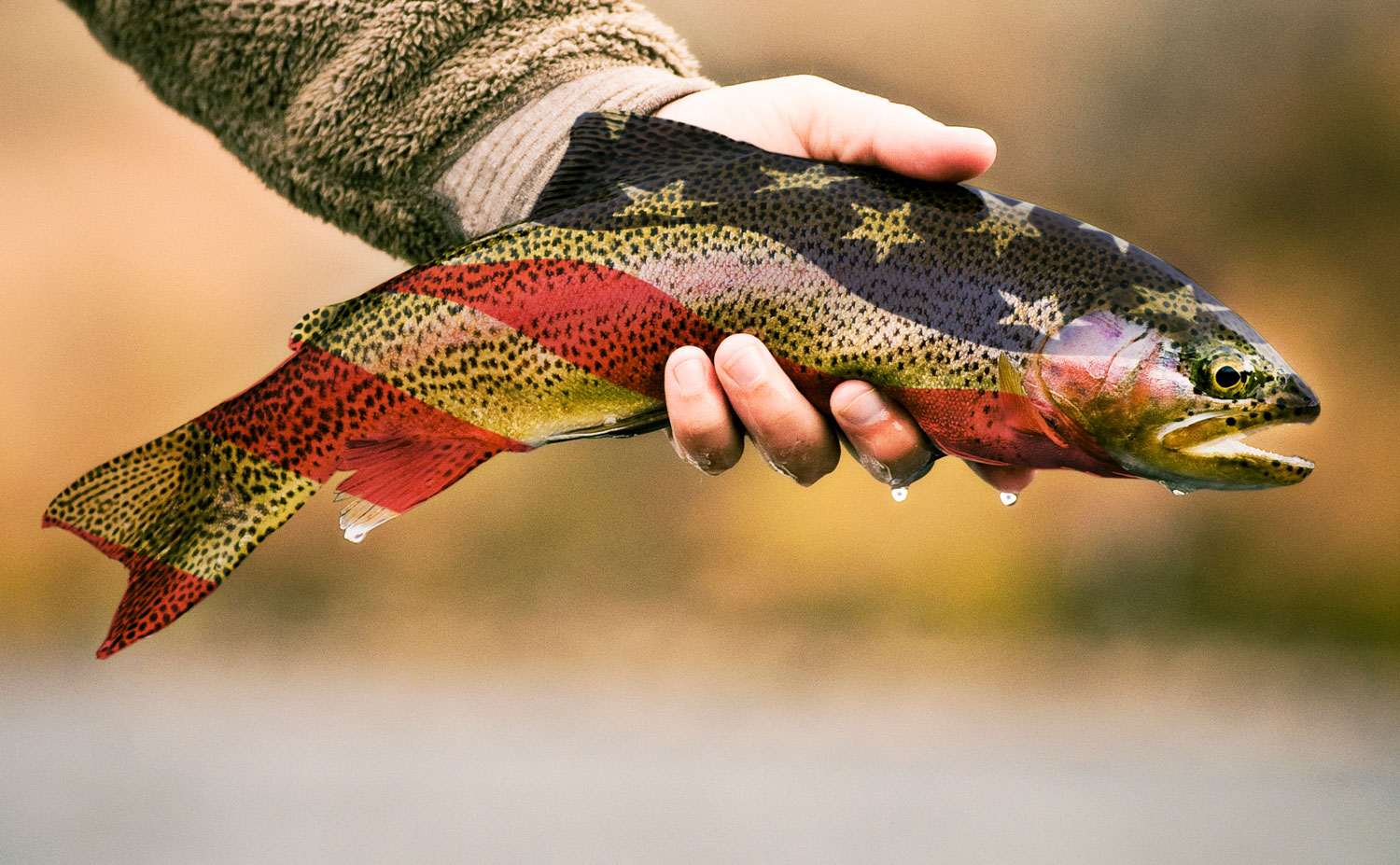
DID YOU KNOW THAT 10% OF THAT NEW FLY REEL GOES TO SUPPORT FISHERIES?
It’s true. Thanks to the Pittman-Robertson Act of 1937 and the Dingell-Johnson Act of 1950, a 10% excise tax on all hunting and fishing equipment goes into a trust fund to support fish and wildlife management.
The US public lands and the opportunities they offer to hunters and anglers are unmatched in most countries. If you are an American angler, a short conversation with European anglers will leave you thanking you lucky stars you were born in the US of A. Our public lands and National Parks are the finest anywhere but we too often take them for granted.
The hidden engine behind our fish and wildlife management is this 10% tax. It has brought species like white tail deer and turkey back from the brink and puts fish on your fly regularly. I know taxes are a hot button subject and I’m not looking to start a political debate so let me be clear. No one wants this tax to go away. It has been a boon, not only for the sporting public but for sporting manufacturers as well.
The idea is that by creating a quality hunting and fishing experience, more people will hunt and fish and they will spend more money doing it. It’s worked very well. The numbers are better documented for hunting than fishing. Hunters spend between five and ten billion dollars a year, generating as much as $324,000,000 in management funding. Firearm manufacturers see a return on their tax investment of around 1000%! You can read more about this (HERE) (HERE) & (HERE)
It’s pretty clear that Pittman-Robertson and Dingell-Johnson have been good to both the economy and the ecology, but there is one place where they come up short. The tax is figured on
Read More »The Flies Of Our Fathers
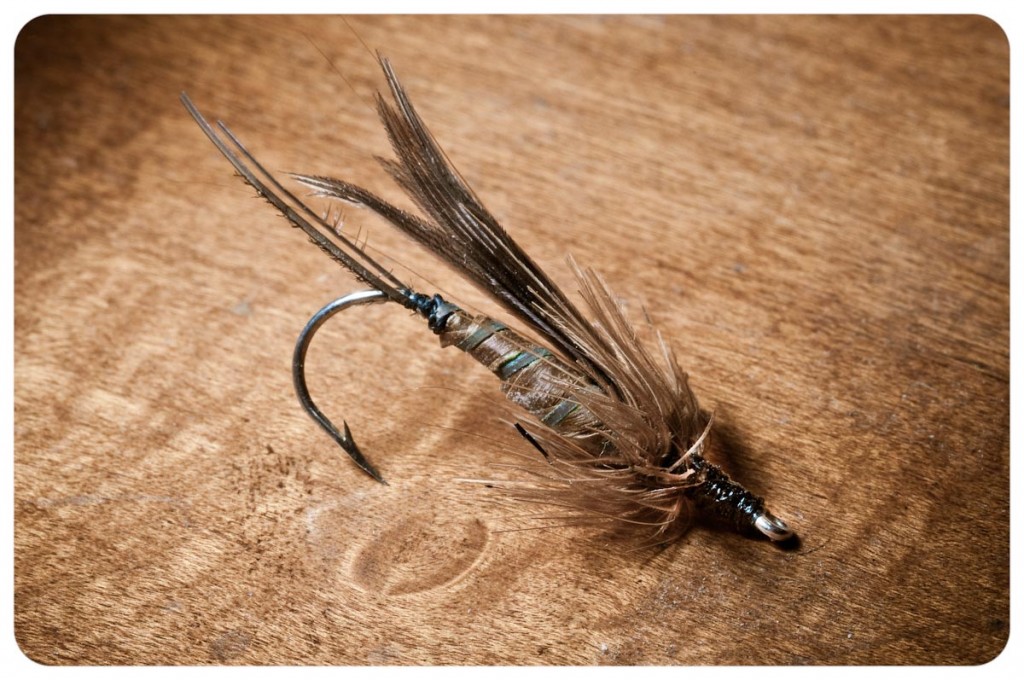
I RECENTLY VISITED MY HOME TOWN IN VIRGINIA FOR A FUNERAL.
Although the occasion was a sad one it was the largest gathering of my family in some time and as you would expect there was a good deal of nostalgia and sharing of family stories. This got me thinking about my Grandfather. W.S. (Pete) Cahill, “Dad” to his Grandchildren, was the man who taught me to fly fish when I was eight years old. He was an icon in our family. In our community really. He was an inventor. Honest to God, that was his job. He held dozens of patents. He was a skilled machinist and, in spite of limited education, the most brilliant and creative person I have ever known. He passed away a long time ago but his home has remained in the family and my brother moved in there a few months back. I knew that he had found a box of Dad’s flies. I couldn’t resist photographing them and like most encounters with my Grandfather, I learned a few things.
I’m not suggesting that Dad was a great tyer. Fishing was a hobby and he was a workaholic. He loved to fish but seldom got the chance. His flies were utilitarian but effective and some great examples of the common wisdom of his time. My guess is that most of these were tied in the 1950s or 1960s. There are some classic wet patterns like the Royal Coachman. There are classical streamers. Maybe most interesting are stone fly nymphs that foreshadow today’s more realistic aesthetic while holding on to the art deco influences of the 1940s with their long sweeping tails and streamline design. Some are so simple you might feel silly fishing them but I feel sure they will still produce.
The materials are very different from what we use today. Hackles are much coarser. Thread is of a heavier weight. The materials all seem stiffer than what I use. There are, of coarse, no synthetics. Swiss straw is fairly common and floss ribs the bodies where you would expect wire. The colors are mostly
Read More »Fish the Amazon with Gink & Gasoline and Nomadic Waters!
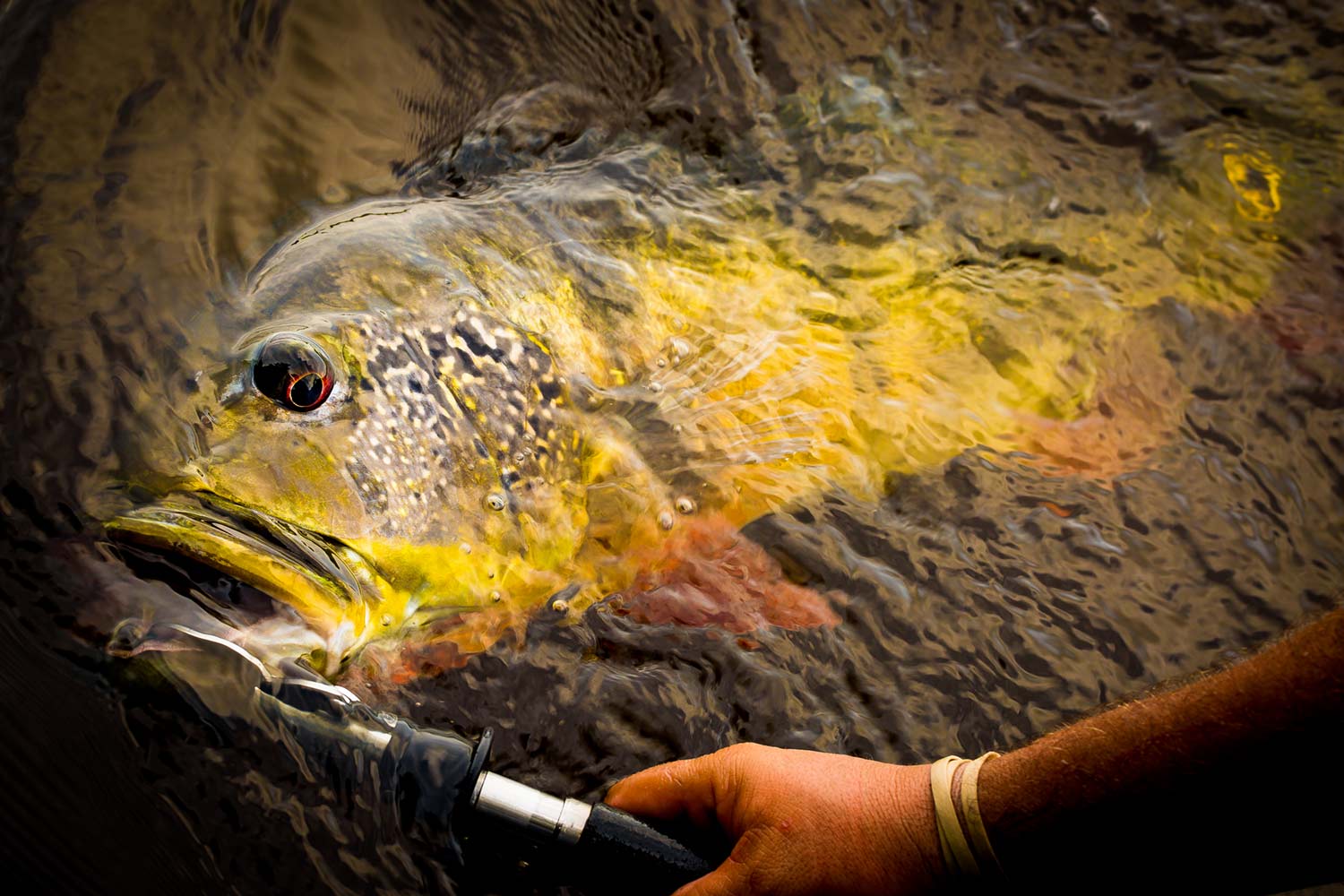
By Justin Pickett
Who’s ready to chuck flies at aggressive Peacock Bass in the Amazon jungle?
We are excited to announce our newest hosted trip with Nomadic Waters! Join us September 10-18, 2021 as we travel to the Brazil interior to chase Peacock Bass throughout some of the Amazon River’s fish-filled tributaries. The Peacock Bass of the Amazon are known as some of the most aggressive, yet beautiful fish on the planet. Found on most anglers’ bucket list, they live within the watersheds of the largest, most biodiverse rainforest on our planet, making this a trip of a lifetime.
Before we go any further, I know everyone is concerned about COVID-19. You’ve got questions and Nomadic Waters has answers.
Read Nomadic Waters COVID-19 policy here: https://www.nomadicwaters.com/covid19-response
Read General terms and conditions here: https://www.nomadicwaters.com/terms-and-conditions
Over the past several years, the Nomadic Waters crew has developed a fly fishing experience that offers amenities and hospitality unrivaled by other operations in the Amazon.
Through their dedicated work they have built strong relationships and gained support from the local Amazon communities, helping grow their mothership program to become an increasingly popular fishing program that welcomes many repeat guests, and hosts, yearly. Yes, the fishing in the Amazon is amazing, but it is the attention to the finest details, professionalism, and their hard-working staff that made us choose Nomadic Waters.
Location: Uatumã River Federal Reserve, Brazil
Trip Dates: September 10-18, 2021
Price: $5500 ($5800 after April 1, 2021). A 50% non-refundable deposit will hold your spot.
Our trip will focus on the prime time of year to fish the waters of the Uatumã River and the surrounding federal reserve. September through October is the sweet spot of time when the water is low enough to bring the fish out of the deep cover, but remain deep enough to navigate our mother ship through the Uatumã’s secret channels. This area has very limited access to outsiders. In fact, Nomadic Waters is one of only three outfitters allowed inside this federally protected reserve. This means that you will be casting in water that has not been fished since the previous year’s trips, literally 365 days before. Because of this, these fish are less accustomed to being fished to, which only increases your chance of hooking up!
Being that Nomadic Waters is a mothership program, we will constantly be on the move. Fishing from top-of-the-line Bass Trackers (don’t worry, they’re setup for fly fishing!) during the day, the mothership will motor to a new location overnight. Due to this and the great size of these waters, you will always have short runs to the fishing and never see the same water twice! Throughout the week we will cover some 60 miles of river, while also exploring some of the countless lakes and lagoons along the way. The mothership is rarely more than 20 minutes away from where we are fishing, so this is a great expedition for those who might want to come back early and rest. Anglers often choose to return to the boat for lunch and a siesta in your air-conditioned suite, or in a hammock on the deck.
This is a great adventure for anglers who are looking for a complete jungle experience. We will have contact with small jungle communities throughout the trip, usually having several opportunities to visit
Read More »12 Smallmouth Bass Patterns For The Fall
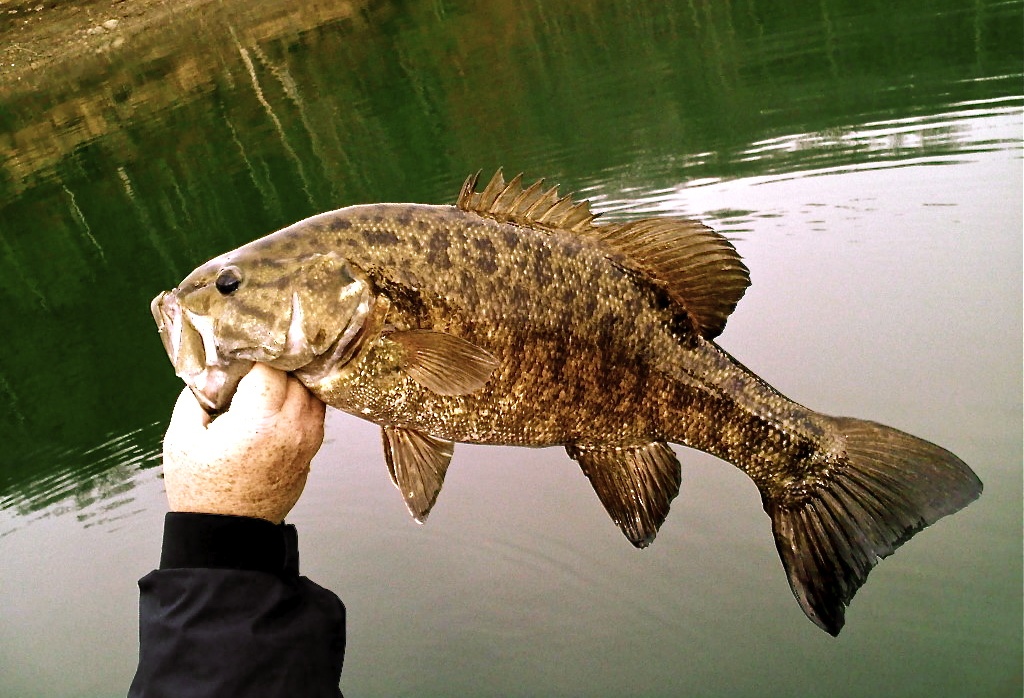
Fall is one of the best times of the year for fly anglers wanting to target big smallmouth bass on reservoirs.
Particularly if the lake impoundment has good populations of shad, blueback herring, or other native baitfish. Fly fisherman fishing surface poppers and subsurface baitfish patterns to these schools of bass can be rewarded with big bronzebacks. The fall brings positive changes in fish behavior and fishing conditions from cooler air temperatures and increased rainfall. For the first time in several months, water temperatures drop significantly on reservoirs which triggers an increase in baitfish activity. Smallmouth bass counter offensively by congregating themselves into schools and driving the baitfish into shallow water where they’ll ball the bait up for easing feeding.
Smart anglers will search out smallmouth bass and the baitfish around the same spawning grounds they visited in the spring during the pre-spawn and spawn. The only difference is during the fall smallmouth bass aren’t’ spawning, they’re instead using these shallow areas of the lake to ambush and corral baitfish. Anglers should also concentrate on main lake points and flats located close to deep water, since smallmouth bass will use these areas to feed as well. It’s best to get on the lake early when the topwater bite is hot. Daylight until ten o’clock in the morning is generally the best for breaking fish, but the evening until dusk can be very good as well.
After the sun gets up
Read More »Bonefishing: No Dancing Allowed!
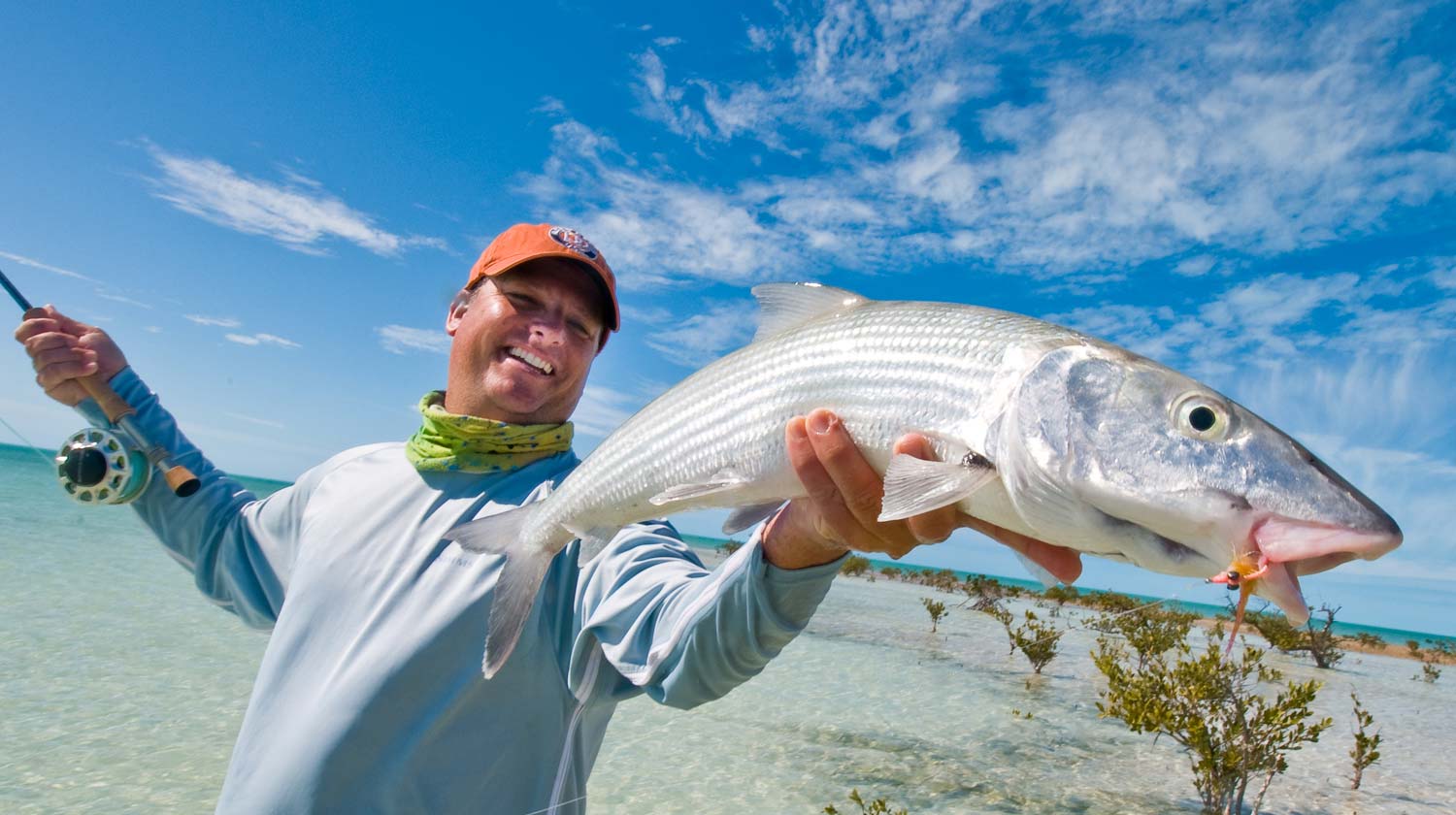
By Louis Cahill
This is the number one mistake I see that keeps anglers from catching bonefish.
I know it’s simple but it absolutely couldn’t be more important. I see it happen time after time. Anglers loose their shot at a bonefish and usually don’t even know why. It gets passed off with, “Man their spooky today!” or “Something ran that fish off,” when the truth is, it was you.
The sound of a careless step on the bow is enough to spook a wary bonefish. The rocking of the boat by an angler casting with locked knees will spook a fish who isn’t smart enough to find his own tail. I see it all the time.
WATCH THIS VIDEO AND I’LL SHOW YOU HOW TO KEEP IT QUIET AND CATCH MORE BONEFISH.
Read More »